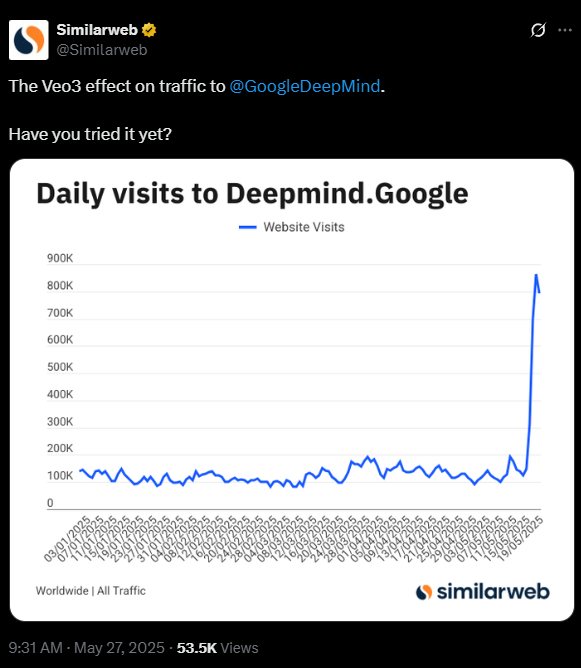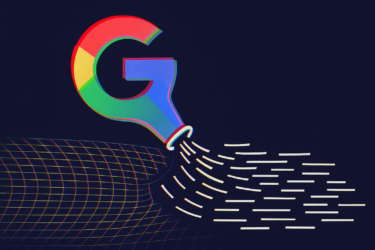Google's Veo 3 video model is off to a fast start, with users generating millions of AI videos just days after launch, according to Google Deepmind CEO Demis Hassabis.
The surge in demand led Google to expand Veo 3 to 71 countries, recently adding the UK. The model is still unavailable in the EU, but Google says a rollout is on the way.
Interest in Veo 3 has far surpassed the team's expectations. Josh Woodward, VP at Google Labs and GeminiApp, said the team spent the entire week keeping systems stable: "Way, way, way more demand than we expected!"
Hassabis noted that the sudden uptick in usage pushed Google's infrastructure to the limit, and credited the infrastructure, chip, and SRE teams with preventing "our wonderful TPUs from melting." The spike in interest was strong enough that Similarweb reported a noticeable "Veo 3" effect on Deepmind's website traffic.

Veo 3 also took off on social media, with users highlighting its ability to generate videos complete with high-quality, matching audio tracks.
Watermarks and mobile rollout
Every video generated with Veo 3 now includes a visible watermark, except for Ultra users working with the Flow tool, who get watermark-free results. Google says this is an initial step to clearly indicate AI-generated content, and the company is also working to broaden access to its SynthID Detector for detecting synthetic media.
It seems odd that Google didn't include watermarks from the start, given their awareness of the model's ability to generate highly convincing fake videos. The fact that users can bypass watermarking by upgrading to Ultra raises further questions about Google's approach to responsible AI deployment. This isn't unique to Google, though - OpenAI's Sora video model follows a similar pattern, allowing users to pay for unwatermarked content.
Veo 3 was initially web-only, but Pro and Ultra members can now use the model in the Gemini app for Android and iOS. Filmmakers also have access to the dedicated Flow tool, which offers specialized workflows for AI-powered video production.
Woodward says new features are already in development for Veo 3, including image-to-video generation within the Gemini app, more consistent audio, faster output, and support for Google Workspace accounts.






